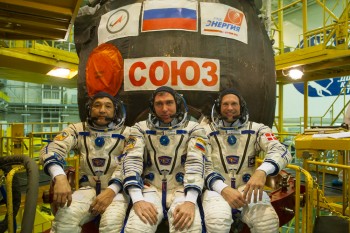ESA astronaut Andreas Mogensen tweeted earlier that it seems likely that his flight to the International Space Station will take two days instead of the now-common six hours.
Looks like we will be using the old two-day rendezvous profile instead of the new six-hour. ISS orbit is too high #iriss
— Andreas Mogensen (@Astro_Andreas) August 26, 2015
Six-hour flights to the International Space Station only started to be common in 2013, with ESA astronaut Luca Parmitano being part of the second crew to reach the Station in record time. Until March 2013 the longer two-day profile was the standard.
When a Soyuz spacecraft is launched into space it catches up with the International Space Station that is orbiting Earth at 28 800 km/h. It has to reach the same speed as well as the same height. Recently the Space Station’s altitude was raised in a standard space-debris avoidance manoeuvre.
Because of the Station’s higher altitude, reaching the weightless research facility in six hours is now more difficult and Roscosmos decided to allow the Soyuz TMA-18M spacecraft more time to rendezvous and dock.
Orbital calculations are incredibly complex and work is continuing to define exact times. The iriss launch time is three minutes later, now set for 04:37 GMT, their return to Earth is unchanged. Docking is now expected at 07:42 GMT on Friday.
Andreas, Sergei Volkov and Aidyn Aimbetov will be in radio contact with ground control during the two days they spend in their Soyuz catching up with the Space Station.
For Andreas Mogensen and the iriss mission planners the shorter time spent on the International Space Station will mean a significant replanning of his time and experiments. Some experiments will undoubtedly have to be left for astronauts to complete at a later date. Mission control will be working through the weekend to fit the pieces in to the new scheduling puzzle.
We will publish his updated schedule as soon as possible.



Discussion: 2 comments
Congratulations to the first Danish astronaut in history.
I am curious to know why, when the rendez-vous takes 2 day instead of the normal 6 hrs, the return to earth is not rescheduled 2 days later in order to maintain the originally planned length of time in space.. What are the dynamics involved there?
Greetings from Sweden;
Eskil
Good question! We asked the Mission Director and here is his reply: https://blogs.esa.int/iriss/2015/09/02/why-the-iriss-mission-was-not-extended/